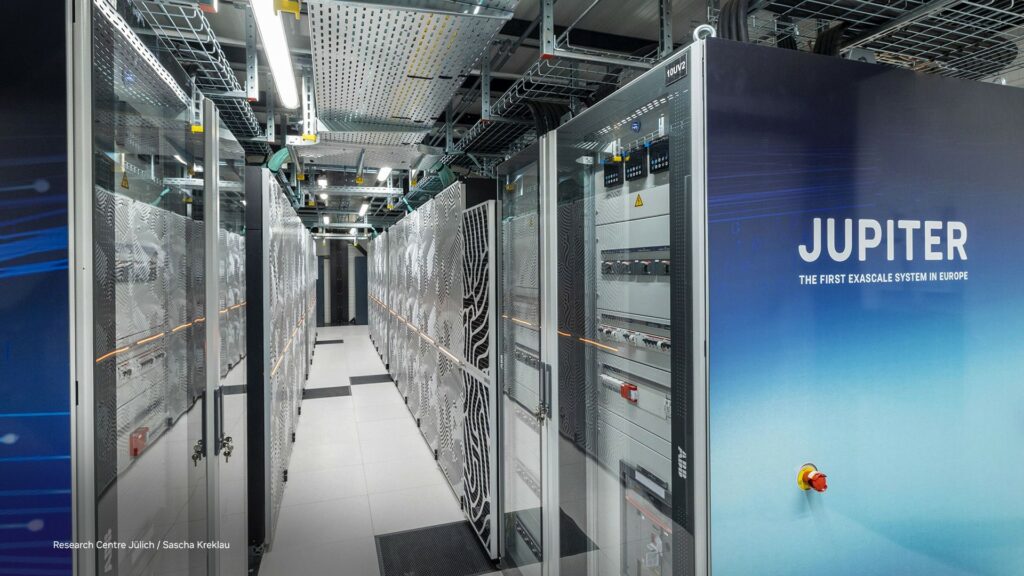
The Jupiter supercomputer, inaugurated at the Jülich Supercomputing Center in Germany, represents a milestone for Europe. It is the continent’s first exascale supercomputer, capable of performing at least one quadrillion calculations per second. With a surface area of 3,600 square meters, equivalent to about half a football pitch, it houses thousands of processor racks and approximately 24,000 Nvidia chips, crucial tools in the field of artificial intelligence.
The project required a total investment of 500 million euros, half of which came from the European Union and the other half from Germany. Its power will be available to researchers and companies, offering new development opportunities in key areas, particularly in training artificial intelligence models.
According to Thomas Lippert, director of the Jülich Supercomputing Center, Jupiter represents the first European supercomputer capable of competing internationally in training artificial intelligence models. A significant achievement for a continent that, until now, has struggled to keep pace with the United States and China.
The gap was also highlighted by a recent report from Stanford University, according to which by By 2024, the United States has developed 40 AI models considered significant, China 15, and Europe only three. This delay has highlighted the need for a cutting-edge computing infrastructure like Jupiter.
Supercomputers, however, are not limited to the field of artificial intelligence. Jupiter could also be used for long-term climate forecasts, with the aim of improving the ability to detect extreme weather events. According to experts, the simulations could cover scenarios lasting 30 years and, in some models, up to 100 years. Other research areas include studying the human brain for the development of drugs against diseases like Alzheimer’s and the energy transition, with simulations to optimize the operation of wind turbines.
Despite its power, Jupiter also highlights a critical issue: Europe’s dependence on US technology. The Nvidia chips, the heart of the system, demonstrate how much European industry still needs to do to reduce its exposure to American suppliers, in a context of increasingly complex international relations.
Finally, the energy issue remains central. Jupiter consumes approximately 11 megawatts of electricity, equivalent to the needs of thousands of homes or a small factory. However, the operators emphasized that it is the most energy-efficient supercomputer among the fastest in the world. Thanks to water cooling and the reuse of the heat produced to heat nearby buildings, the system also embodies a vision of sustainability.
Follow us on Google News to receive daily updates on cybersecurity. Contact us if you would like to report news, insights or content for publication.
